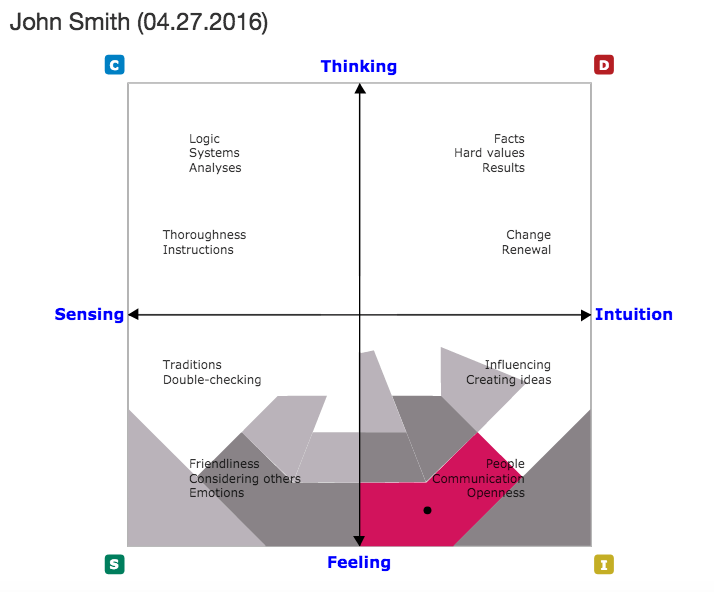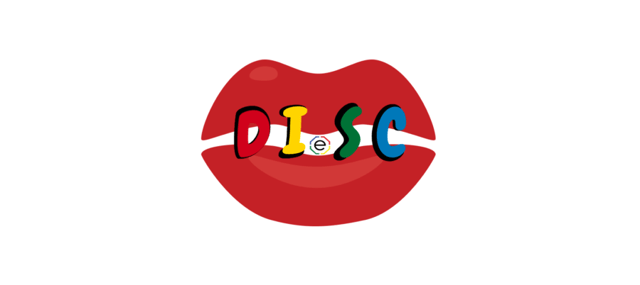Have you ever found yourself over-thinking and complicating things when coaching DISC? Then try focusing on the DISC basics, using a more simple DISC approach.
You have most likely heard of the KISS model (Keep it Simple Stupid). While we are definitely NOT stupid, keeping it simple in the things that we do can help decrease misunderstanding and mistakes. A simple DISC approach can also increase learning and motivation. You can apply the KISS model to DISC and communication, and to debrief DISC reports.
Where to start when debriefing DISC
You can use any approach for debriefing or teaching DISC since the respondent(s) doesn't know what they don't know. Hence, try starting at the lowest level of interpretation and work from there. When using DISC, go only as deep as you need to go. Remember that less is often more! Below you will find some ideas on how to do this.
Looking at DISC styles
We, as coaches, managers, and trainers, try to avoid over-analyzing DISC reports. How much information does your client really need to get started? We also need to be careful to not step outside the limits of the DISC data. Most of us are not psychological professionals, but we can still provide sound expert advice based on the DISC reports by using a simple DISC approach.
Let's look at a sample. Assume that John Smith (not a real person) took the DISC test. Based on his self-evaluation, there are simple facts we observe when looking at John's DISC style. You can clearly see that John's DISC profile is located in the I-style quadrant by the dot placement, as well as the pink shading. DISC trainers may even be able to further identify that his DISC profile is plotted in the "IS" section of the DISC Diamond. Hence, he is an "IS" DISC profile type or simply put, a mix of I-style and S-style.

S-profiles and I-profiles are on the people-oriented, bottom-half of the DISC model. The DISC report can provide us further information about the relationship of John's I-style and S-style . For example, the DISC report will clearly show that John is 50% I-style and 50% S-style.
Use the Simple DISC approach to debrief DISC reports
 We can make some general assumptions based on John's DISC style. For example, he most likely prefers to focus on people and feelings over tasks and facts. John may be friendly and be more on the emotional side. There is a good chance that he is open and enjoys interacting with others. John may even be someone who can lose track of tasks. However, these are still assumptions based on his natural style. Remember that the DISC tool is supporting information to understanding John's behavioral style better and never a sole reason for making decisions about him.
We can make some general assumptions based on John's DISC style. For example, he most likely prefers to focus on people and feelings over tasks and facts. John may be friendly and be more on the emotional side. There is a good chance that he is open and enjoys interacting with others. John may even be someone who can lose track of tasks. However, these are still assumptions based on his natural style. Remember that the DISC tool is supporting information to understanding John's behavioral style better and never a sole reason for making decisions about him.
While we want to keep it simple, we also need to avoid over simplifying. John's ability to adapt, adjust, and his experience also play a role in his ability to communicate and interact effectively. Having said that, any additional information we can provide John, and perhaps his manager and co-workers, can be very useful.
DISC Report Favorites and Pacing
As DISC facilitators, we tend to have our favorite sections of the DISC report. Highlight them so people have a solid starting point to understanding DISC. The "John at a Glance" page or a DISC overview page is a great place to start once you've identified John's DISC style. An overview page provides a visual picture of John's style. John may still be trying to fully grasp DISC profiles, but he can easily see and understand descriptor words that describe his style:
 Sometimes we want to provide as much information as possible, but we need to practice what we preach. Primarily, you need to identify the style of your client. You know that D-styles and I-styles prefer to move quickly and not to focus on too many details. You will lose them with too many details and facts. S-styles and C-styles are interested in details and facts, but don't like to be overwhelmed with data and info, all at the same time. Slow it down and give them time to process data and facts. All of these are good reasons to keep it simple, at least to start. Pace the debrief session to the DISC style of your client.
Sometimes we want to provide as much information as possible, but we need to practice what we preach. Primarily, you need to identify the style of your client. You know that D-styles and I-styles prefer to move quickly and not to focus on too many details. You will lose them with too many details and facts. S-styles and C-styles are interested in details and facts, but don't like to be overwhelmed with data and info, all at the same time. Slow it down and give them time to process data and facts. All of these are good reasons to keep it simple, at least to start. Pace the debrief session to the DISC style of your client.
Hence, a quick overview to the DISC report can be as simple as identifying the DISC style and viewing the overview of the DISC style. Remember, the DISC report can always be read and understood further, but at the pace of the individual.
Keeping it Simple DISC Final Thoughts
Hopefully you recall the 4 Steps to Effective Communication. There really is no better approach to improving how we interact. Simply put, people have different styles. Next, be aware of your own style and then, learn to identify the style of others. Finally, adjust your style to improve how you interact with others. The Extended DISC report is build on the 4 Steps to make it even easier for you to debrief.
The DISC assessment should not be the sole criterion for making decisions about oneself. The purpose is to provide supporting information for the person's self-development. Use the DISC report to help the person learn more about himself/herself.
DISC helps us better understand how people do what they do, but we don't know why they do it. Start at the basic level when debriefing the report, provide simple DISC information, and don't make too many assumptions. Don't make it more than it. In other words, less is often more!
Over-coaching can be more harmful than under-coaching. Keep it simple!
John Madden, Hall of Fame NFL football coach and broadcaster
